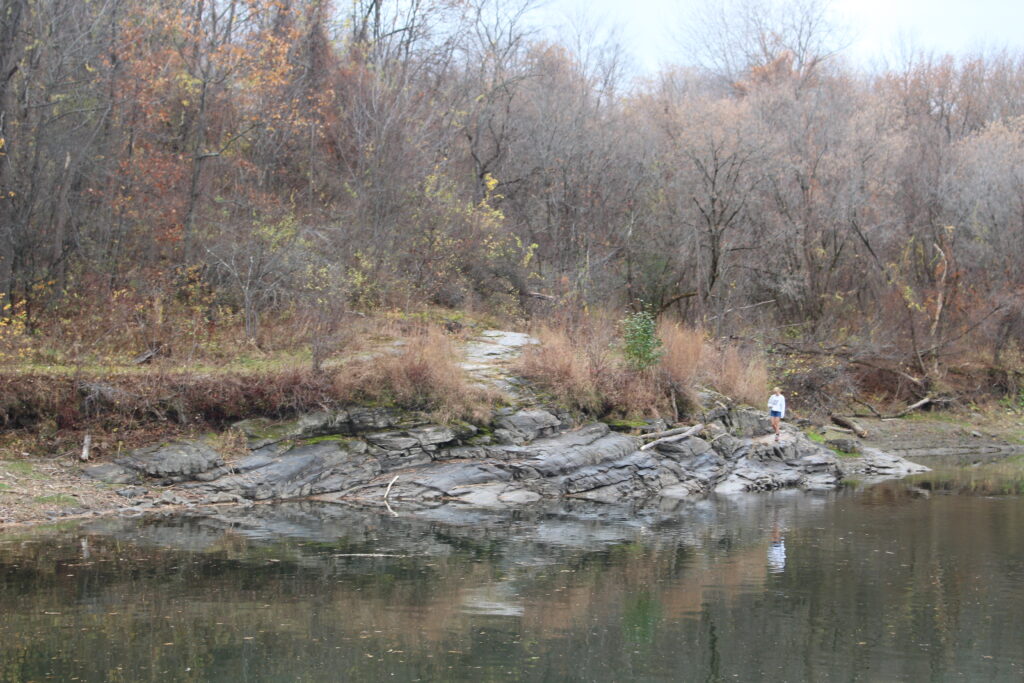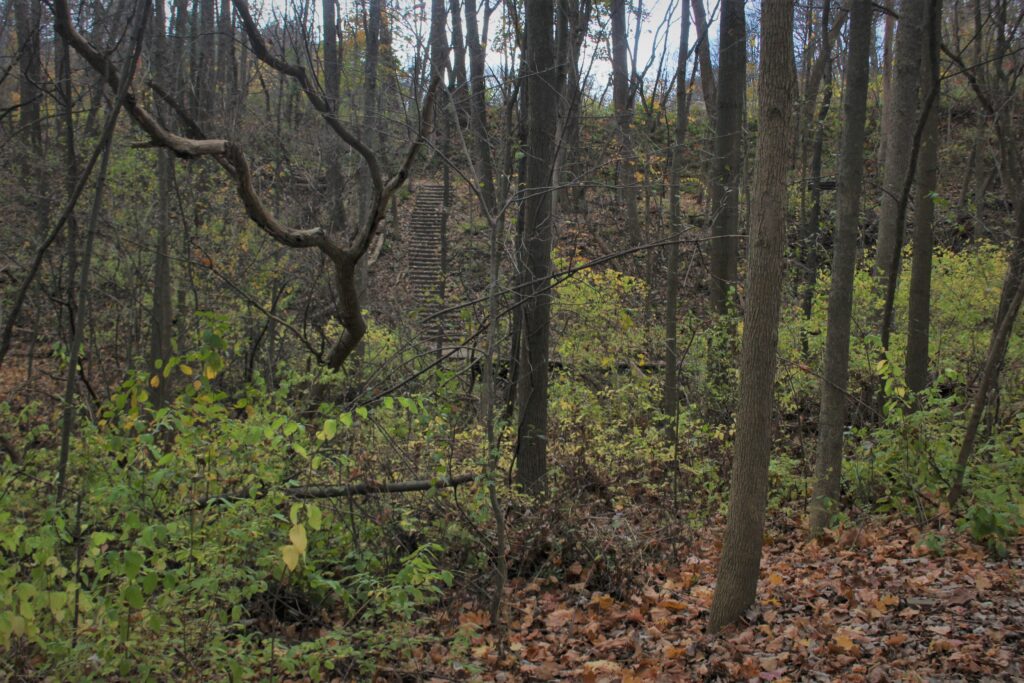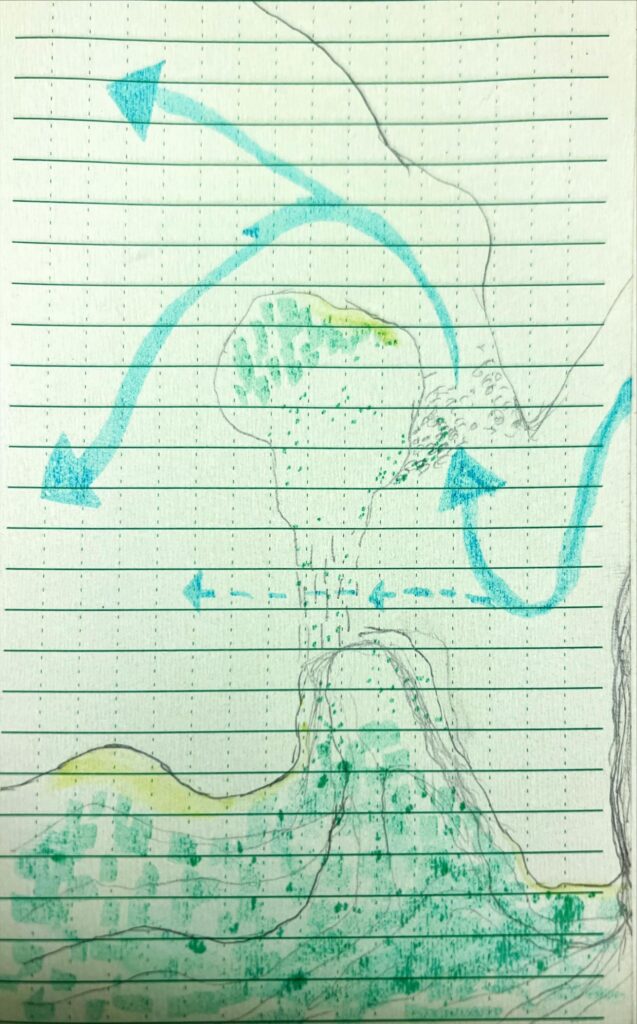Salmon Hole
Observing
As I sat on the jutting rocks of Salmon hole, I first noticed how much lower the water level was compared to last. I was able to walk out onto the rocks where there was rapidly flowing water on my initial visit. On these sometimes-covered rocks, there were fewer woody plants; there were mostly just grasses, lichen and moss. Even back on the flatter rocky section that I stayed the first time, there was a noticeable increase in the growth of these types of plants.
Instead of yellow leaves on most the trees, seldom were any of the leaves attached, instead they sat trampled and brown on the ground after being tread on by humans and wildlife alike.
The lack of leaves stealing sunlight from the understory allowed for thrive, showing more diversity than it did on my initial visit.
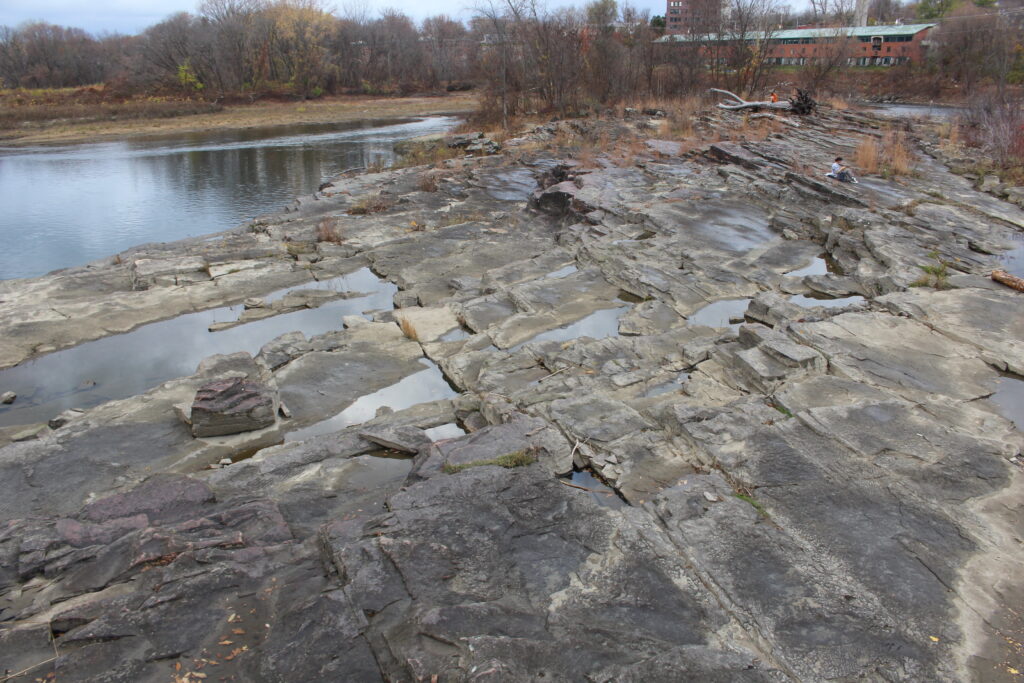
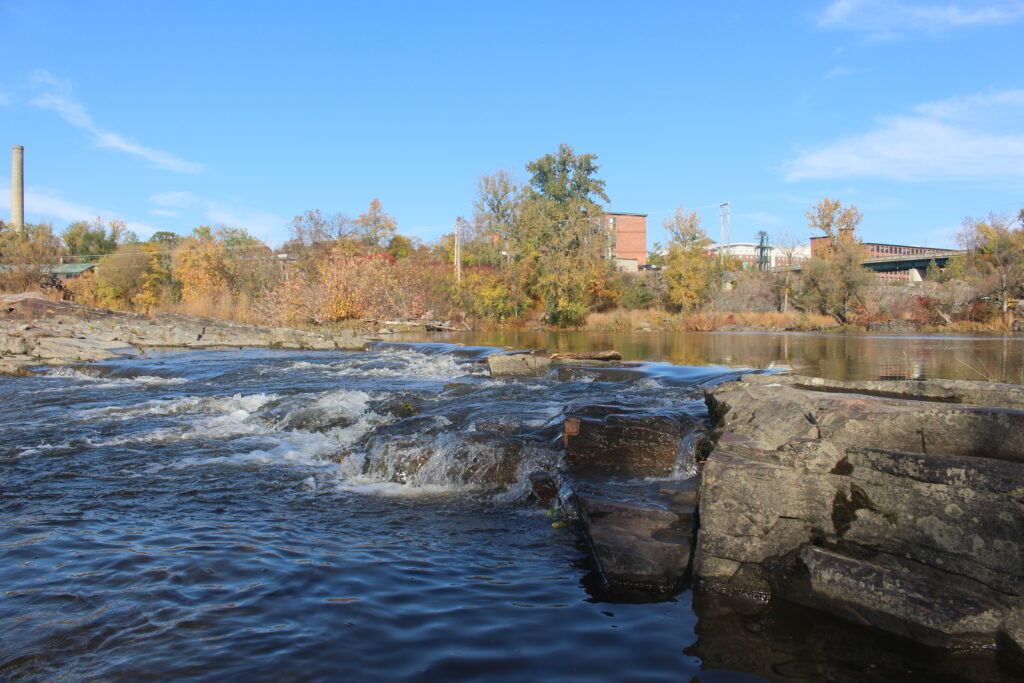 Initial Visit: water quickly flowing over the same rocks
Initial Visit: water quickly flowing over the same rocksHowever, the first thing that I noticed were the few other people that were there. Unsure whether it was not peak fishing time or if the water level effects it, for some reason there were fewer people fishing on this visit. Instead Salmon Hole was occupied by college students sketching, listening to music, and just relaxing. Then, all of the sudden, a great blue heron swooped down and landed on the shore of the river across from me. It waded through the water, high-stepping in the way that herons do. For a few minutes I just followed the heron with my sight as it looked for fish to feed on, unsuccessful, it flew away to check a new spot.
